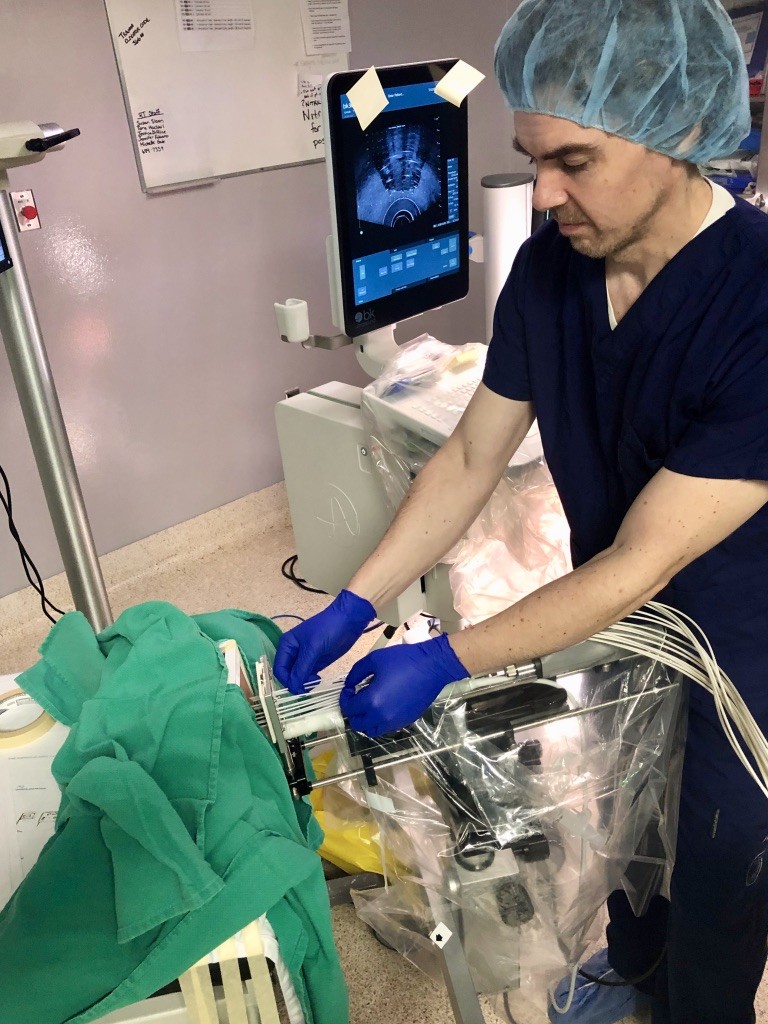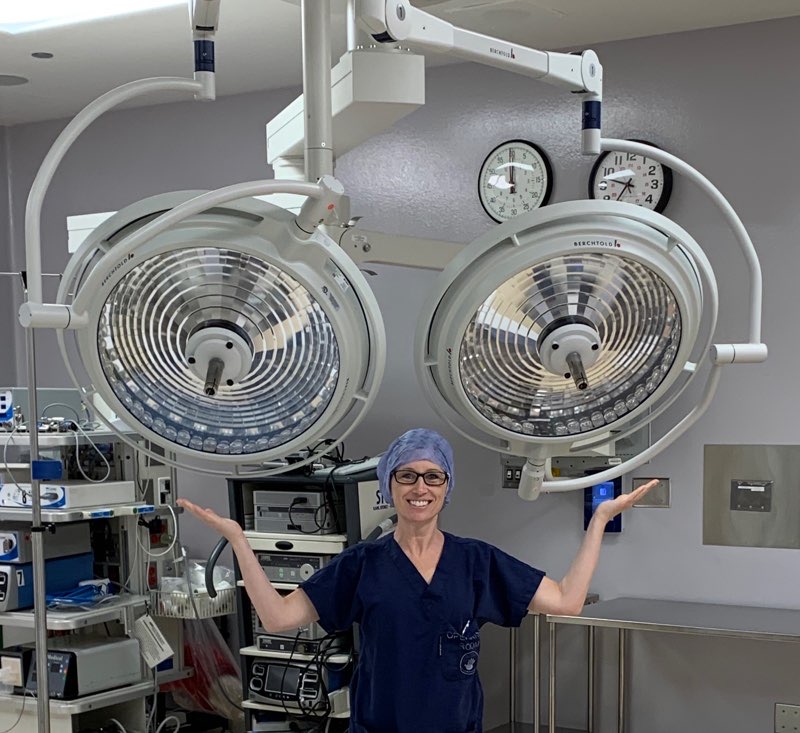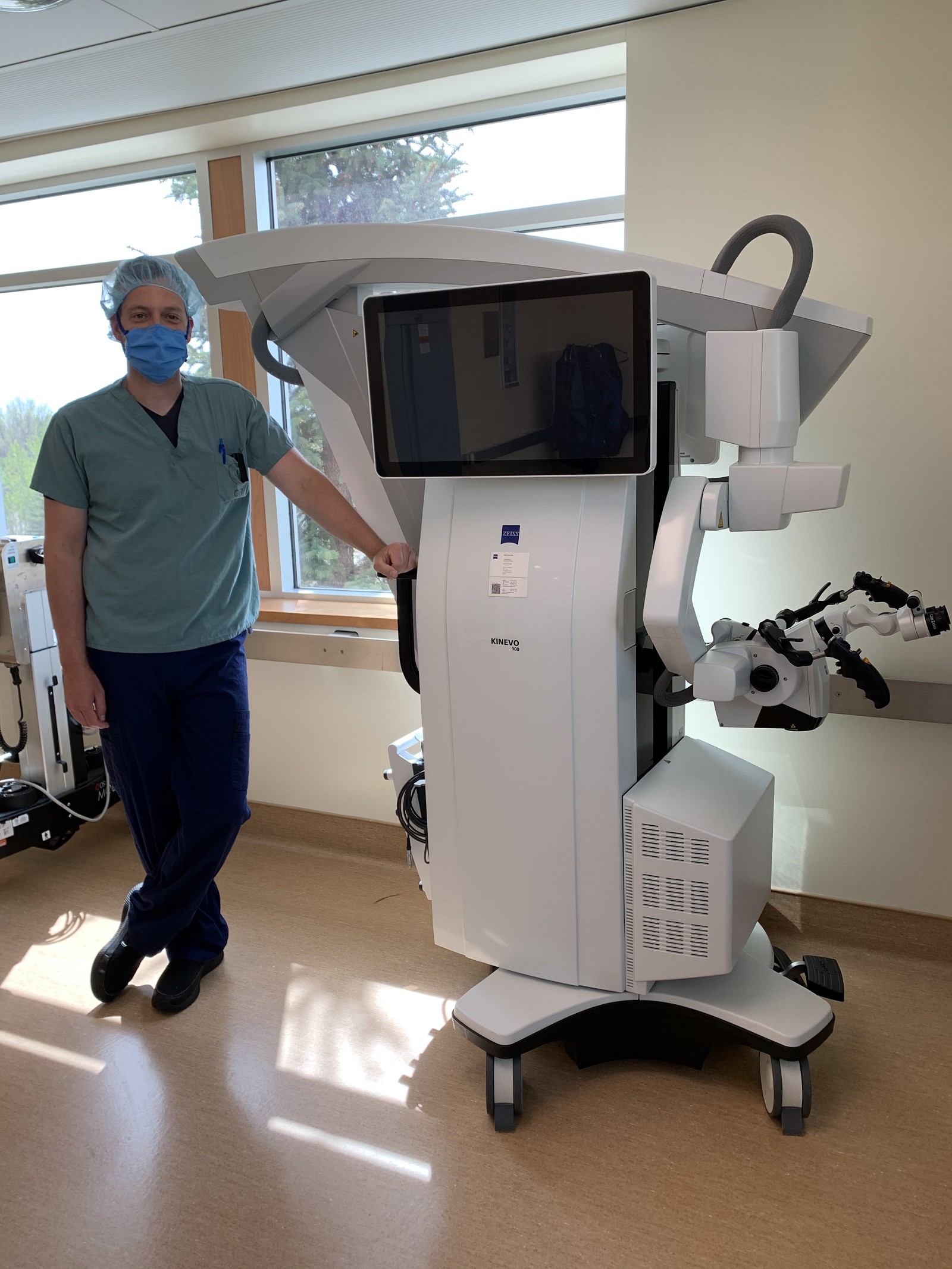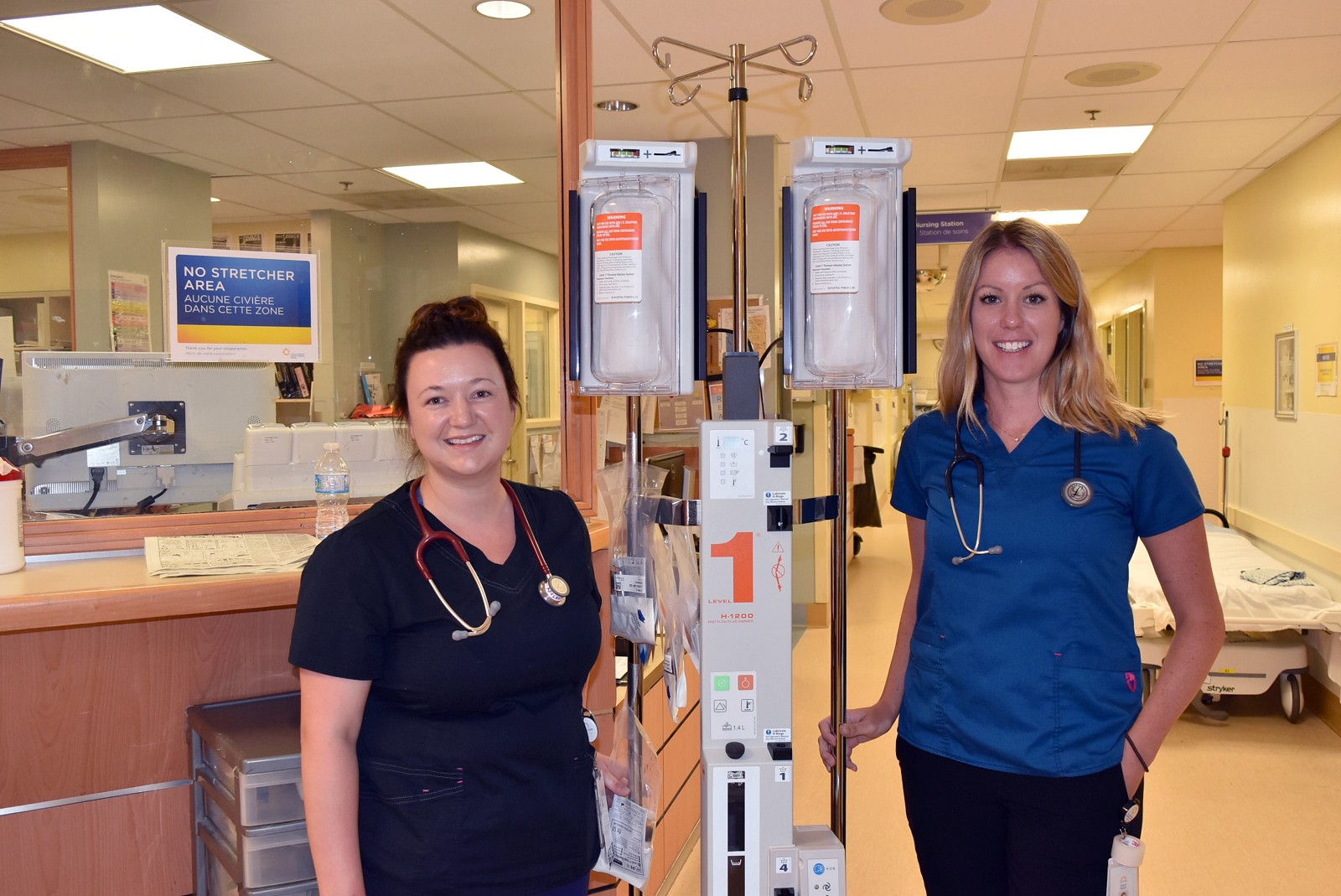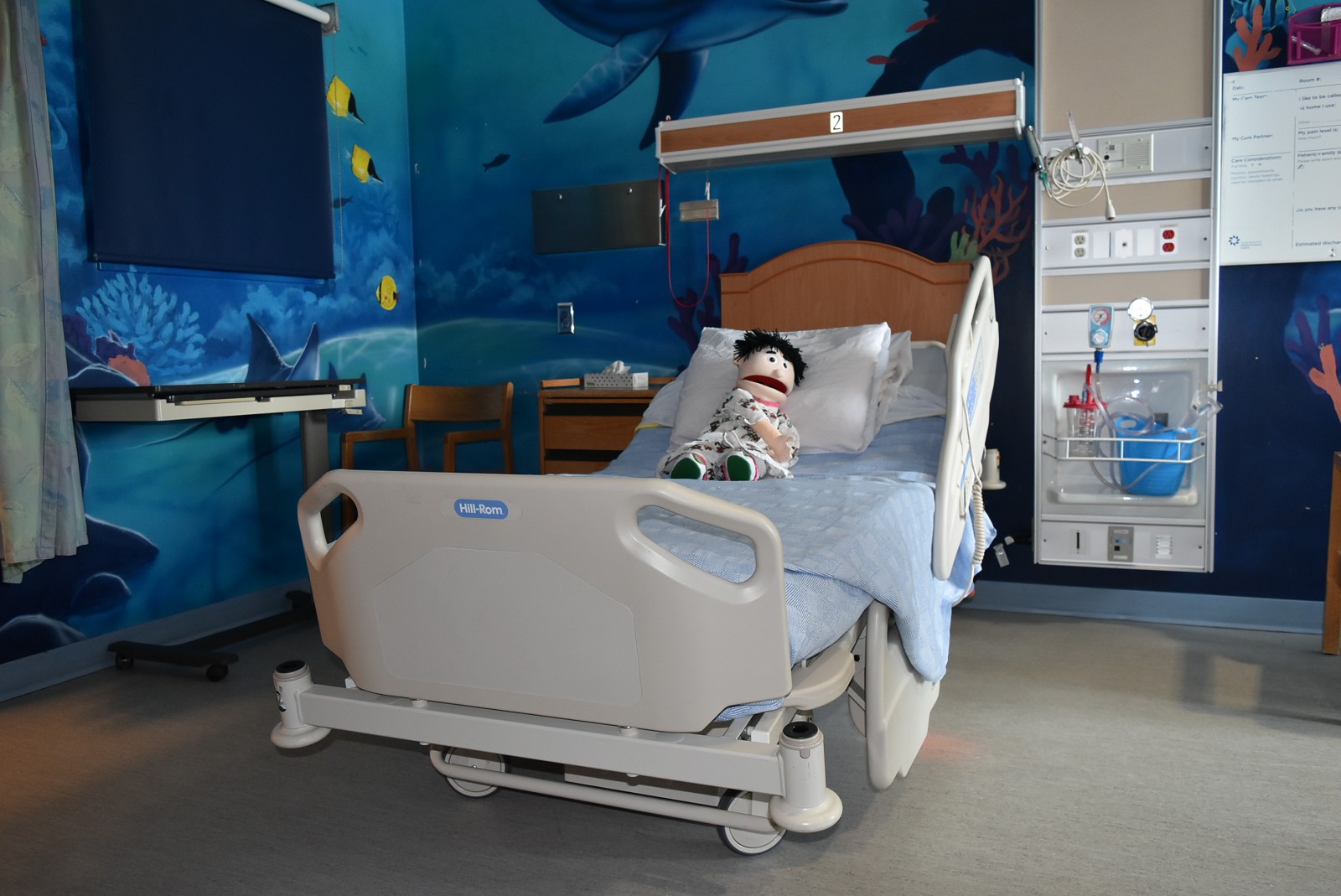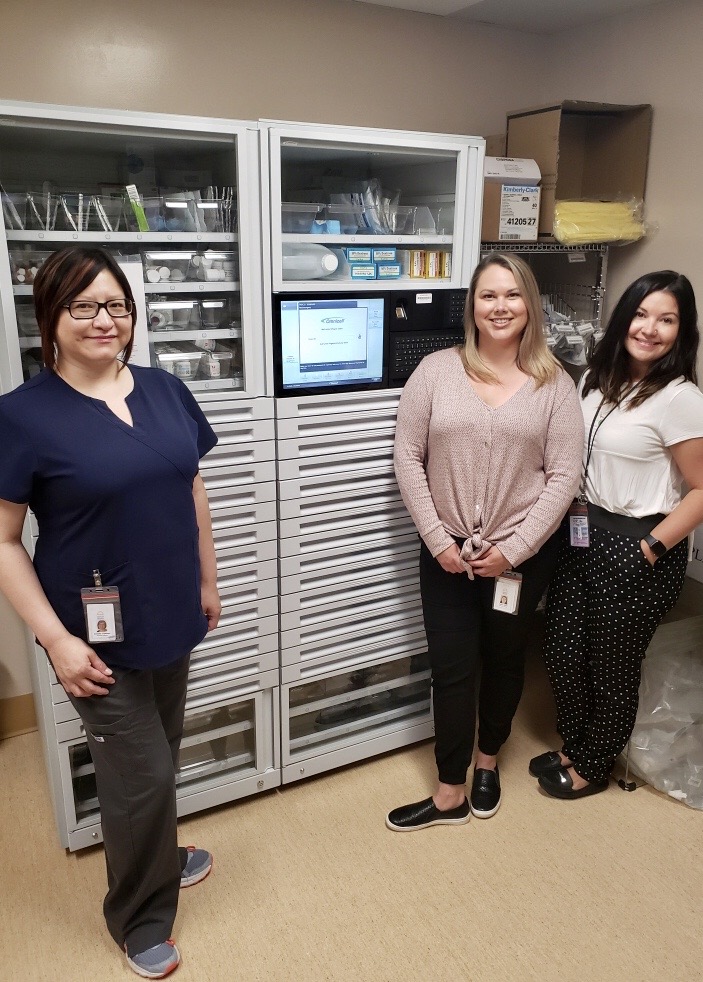Funding in 2019
Your donations directly funded essential patient care equipment & programs at the Thunder Bay Regional Health Sciences Centre.
Mammography Unit Replacement with Tomosynthesis Unit/Stereotactic Biopsy
(Diagnostic Imaging, $ 475,000)
Equipment for giving people the best possible chance to find breast cancer when most treatable
Detailed images are everything when it comes to looking for breast cancer; you can't treat what you can't see. The Linda Buchan Centre for Breast Screening and Assessment will replace one of its mammography units and install a new state-of-the-art tomosynthesis/stereotactic biopsy unit. This new unit will ensure patients can access Rapid Breast Assessment; where mammography, ultrasound, biopsy (if required) and one-on-one interaction with a breast imaging radiologist is offered all in one visit. For anyone with a suspicion of breast cancer, reducing the time it takes to be diagnosed or given the all-clear is of huge importance.
Positron Emission Topography/Computed Topography
(Diagnostic Imaging, $ 40,000)
Equipment for providing clear diagnostic images for cancer, cardiac disease and neurological disease
Positron emission tomography/Computed Topography (PET/CT) can identify changes at the cellular level, along with where they're occurring, and therefore may detect the early onset of disease before other imaging tests can. This highly specialized test can help determine the best treatment plan for cancer, providing hope to patients. As medical imaging technology has advanced so rapidly over the past decade, a new PET/CT will provide images fast, with better detail. This will allow patients needing this service to receive timely care close to home.
High Dose Rate Brachytherapy Ultrasound System
(Radiation Therapy, $ 60,000)
Equipment for precise prostate cancer treatment
For the one in nine men who will have prostate cancer, a new type of radiation therapy is available. High Dose Rate Brachytherapy uses small needles inserted into the prostate that are wired to a radiation source. A high radiation dose is delivered precisely to the tumour, sparing healthy cells. To ensure the correct placement, an ultrasound machine is used to guide the needles. Thanks to the specificity of this treatment, men may experience fewer side effects from the radiation.
Pictured is Dr. Marlon Hagerty, Radiation Oncologist
Dental Drills
(Operating Room, $47,106)
Equipment for specialized dental surgery
A sore tooth is never any fun and can cause serious pain. Thankfully new dental drills in the Operating Room will allow dentist to perform procedures more efficiently, helping to keep patients safe and providing treatment to resolve tooth problems quickly.
Pictured is Debra Everts, Registered Nurse and Team Lead for Dental
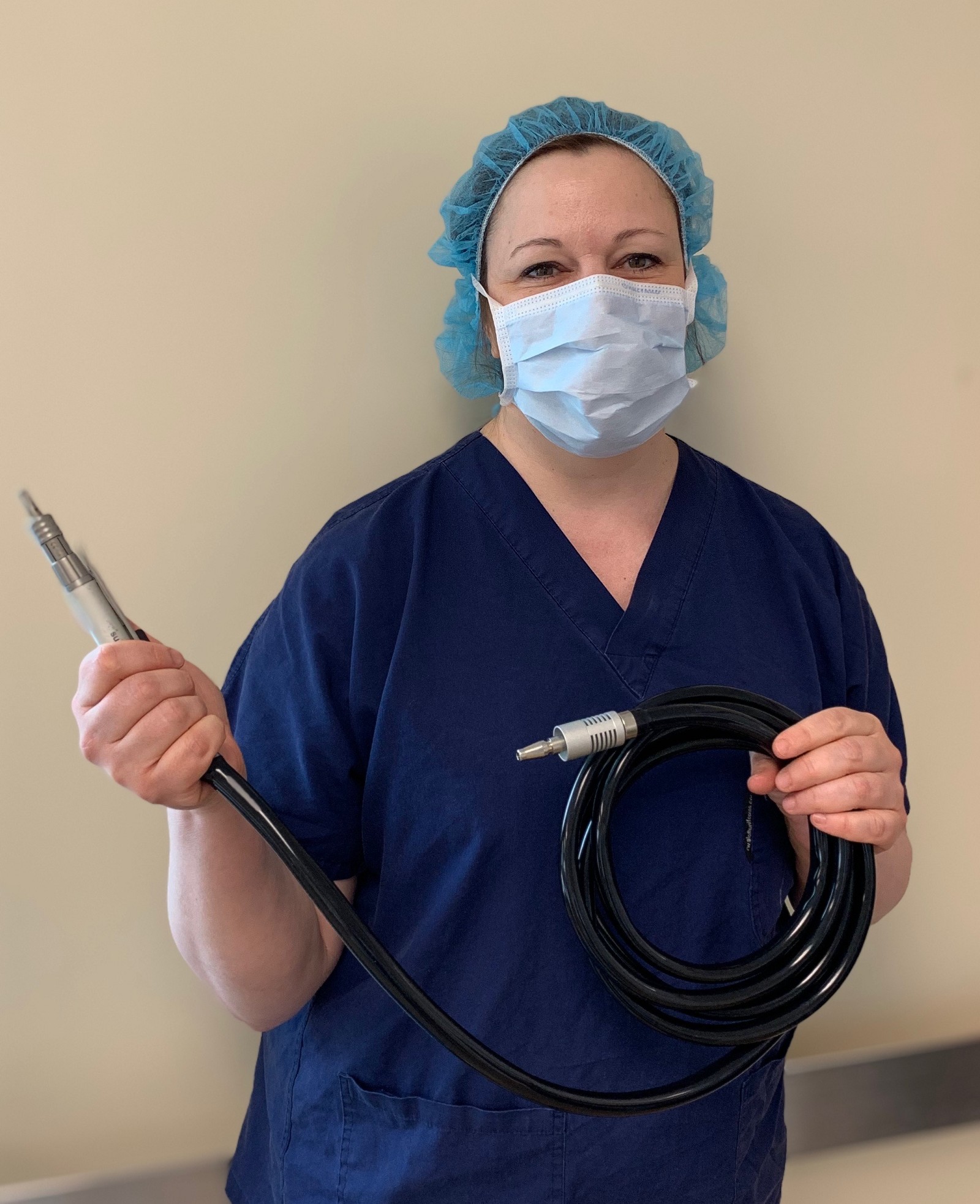
Surgical Lights
(Operating Room, $75,000)
Equipment for surgeons to see well during surgery
Being able to see properly is essential during surgery as surgeons perform extremely delicate procedures to care for patients. Lights in the 14 Operating Rooms are used daily and new ones keep patients even safer thanks to their ability to minimize shadows and provide the best illumination.
Pictured is Christine Erickson, Perioperative Manager
Dental X-Ray
(Operating Room, $85,000)
Equipment for dental surgeries
It's a standard of care in dentistry; having an x-ray taken helps dentist assess and decide how to provide the best care to patients. A new dental x-ray machine in the Operating Room will provide digital x-rays during surgery, allowing dentists to decide, in real-time, what next steps they need to take. Additionally, when surgery is over, the images can be directly loaded into a patient's medical record, and reviewed as necessary.
Neuro Microscope
(Operating Room, $110,000)
Equipment for neurosurgery
When it comes to brain surgery, seeing is everything. For the 250 patients who require neurosurgery each year, a specialized neuro microscope allows surgeons to have precise vision during procedures. Without this critical piece of equipment, patients would have to leave town for surgery.
Pictured is Ryan Kelly, Registered Nurse and Team Leader for Neuro
Cardiac Care Equipment – Intra-Aorta Balloon Pump & Pacemaker Generator
(Intensive Care Unit, Emergency Department and Trauma Program , $76,095)
Equipment for patients who need emergency cardiac care
After having a major heart attack, some patients hearts' may need a little extra help. An intra-aortic balloon pump provides life-saving care by helping the heart pump more effectively, which improves blood flow throughout the body. It works by inflating and deflating a catheter inside the aorta, imitating the heart's pumping action. Additionally, if patients have a slow heart rate, which can also result from a heart attack, physicians may need to use a pacemaker generator to keep a patient's heart beating faster. Both devices are essential in giving someone time to beat the odds.
Pictured is Chad Johnson, Critical Care Manager
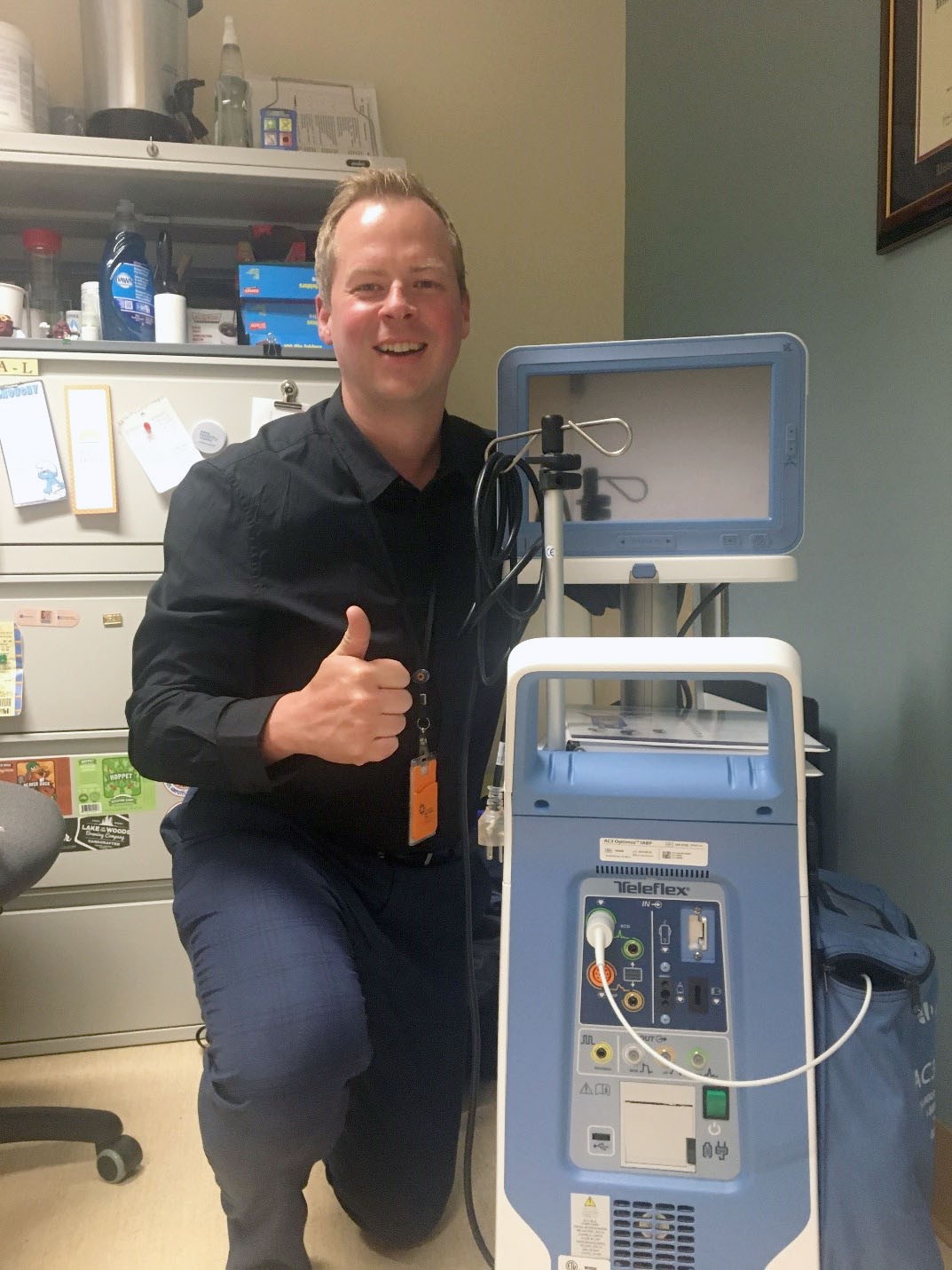
Rapid Fluid Infuser
(Intensive Care Unit, Emergency Department and Trauma Program , $20,000)
Equipment for patients requiring critical care
Trauma care is all about helping patients in dire need and doing so quickly. Seconds count. In the Emergency Department, a Rapid Fluid Infuser provides a patient with an entire unit of blood in two minutes; critical when someone has lost significant fluid or blood from burns, or even internal haemorrhaging. It's also used to help warm up patients suffering from hypothermia. It gives patients a fighting chance.
Pictured are Dylan and Deanna, Registered Nurses in the Emergency Department
Defibrillator
(Intensive Care Unit, Emergency Department and Trauma Program , $27,000)
Equipment for patients requiring critical care
In the Intensive Care Unit (ICU), staff provide care to the most critically ill patients; approximately 1,400 a year. A defibrillator is an essential tool to help shock a heart during cardiac arrest, providing a chance for patients to keep living.
Pictured is Wayne Taylor, Manager, Cardiovascular & Regional Stroke Unit 2C
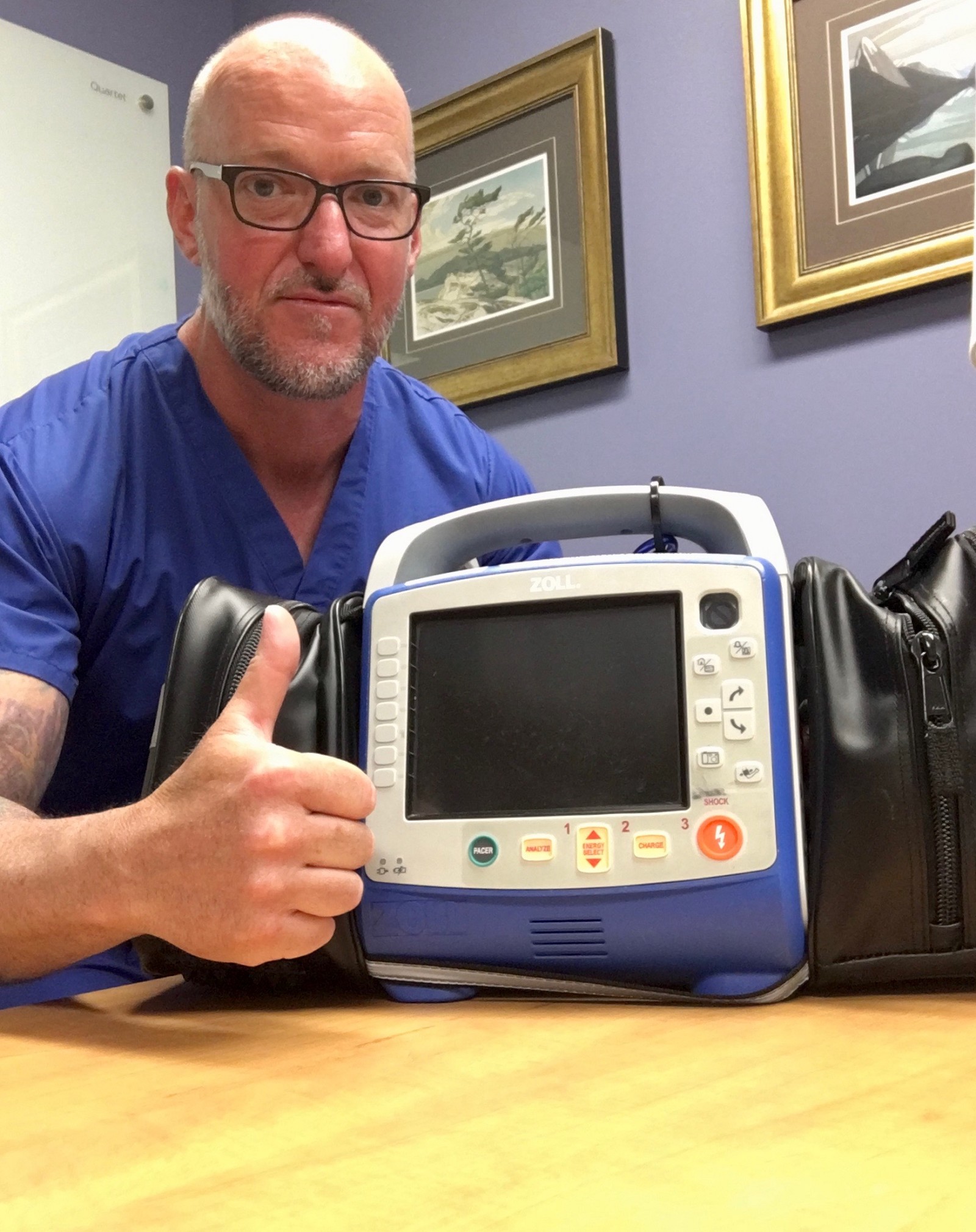
Ultrasound
(Intensive Care Unit, Emergency Department and Trauma Program , $60,000)
Equipment for patients requiring rapid assessment and treatment
Finding out ‘what's wrong' is imperative; especially for patients who come into the Emergency Department or when there are changes to a patient's status in the Intensive Care Unit. An ultrasound is used to provide images from inside the body. Only by identifying what's happening can treatment begin.
Pictured is Dr. Exley, Emergency Department Physician
Prismaflex Machine, Portable Water Treatment System and Aquacart
(Renal Service , $61,915)
Equipment for patients requiring life-saving dialysis or plasma exchange
When patients are critically ill in the Intensive Care Unit, they may require 24-hour dialysis treatment. The Prismaflex Machine provides this immediate life-saving treatment. It may also be used if a patient needs plasma exchange to rid their blood of disease triggers. For this machine to function, a Portable Water Treatment System must be used to treat the water, as patients can't be moved to the Renal Department where the water is already treated. These are immediate treatment needs and any delays can cause a significant impact to the patient, including death.
Pictured are (L-R): Lisa Motkaluk - Pharmacy Technician, Allyson Hoard-Mann - Renal Coordinator, Mary Wrigley - Manager, Renal Service, Sally Milani - Dialysis Aide, Tamara Duncan - Hemodialysis Nurse, Kristy Petzschler - Hemodialysis Nurse, Stacey Carruthers - Clerk, Erika Bishop - Hemodialysis Nurse, Liza Fiala - Dialysis Aide
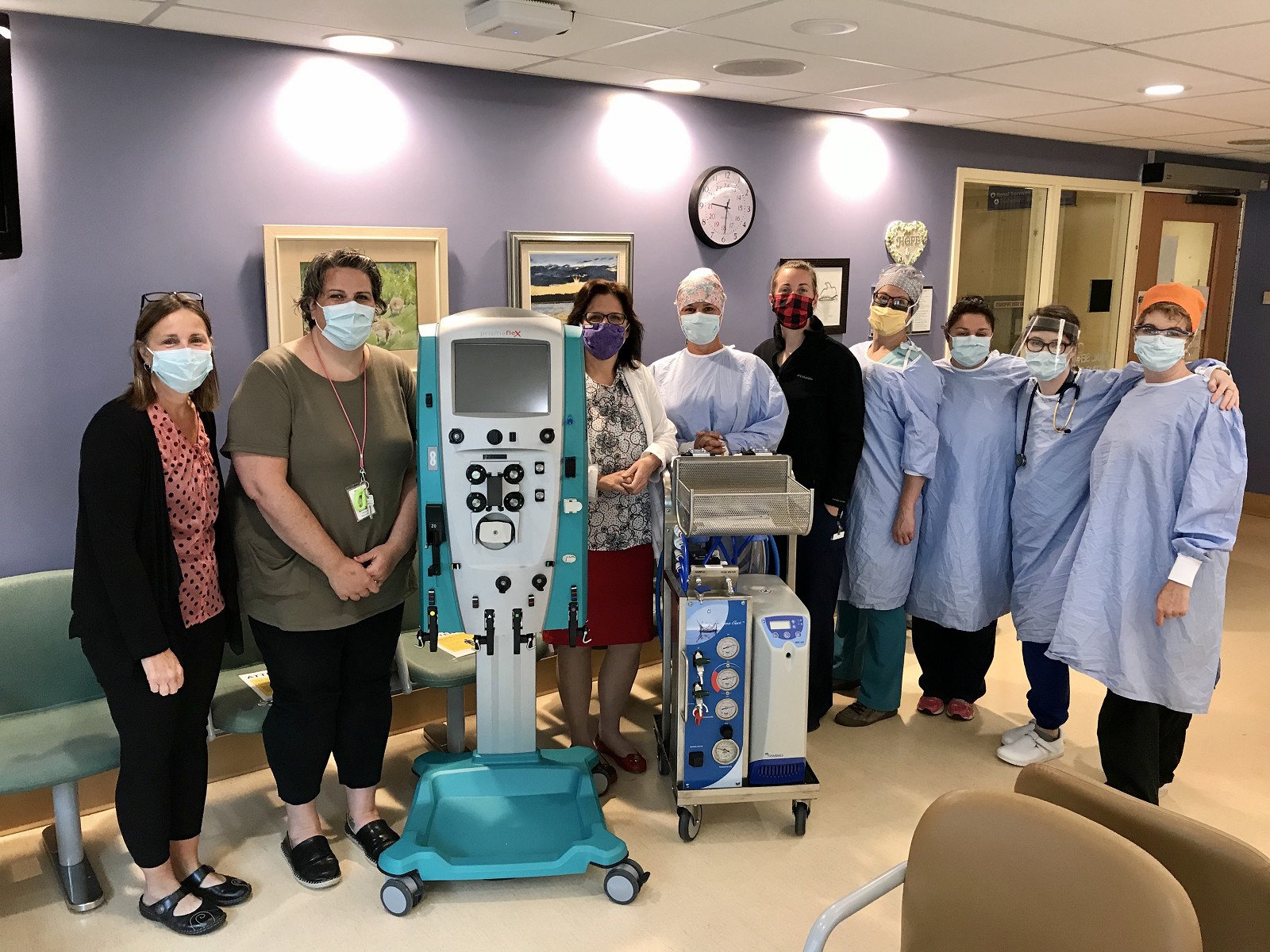
Syringe Pump
(Neonatal Intensive Care Unit , $6,200)
Equipment for specialized care of infants
Caring for infants in the Neonatal Intensive Care Unit requires the highest level of professionalism, along with copious amounts of love. To ensure infants receive accurate amounts of fluid and medications, a Syringe Pump is used to monitor and properly give fluids, so that the tiniest patients can thrive.
Incubator
(Neonatal Intensive Care Unit , $32,000)
Equipment for specialized care of infants
For the world's newest residents, especially those born premature, it can sometimes be difficult to regulate body temperature and it's easy to pick up infections. In the Neonatal Intensive Care Unit, excessive light and noise can be tough for infants to handle. Therfore, an incubator is used to protect the infant, and give them the best possible chance to grow.
Neonatal Crib
Neonatal Intensive Care Unit ($12,000)
Equipment for specialized care of infants
A small room with a plethora of medical equipment isn't the easiest environment for practitioners to provide care for infants. In the isolation rooms of the Neonatal Intensive Care Unit, where infants who require airborne isolation are placed, crowding was causing a problem. New, smaller cribs will now allow more room to work and provide the critical care newborns require.
Phototherapy Unit
Maternal/Newborn Unit ($9,000)
Equipment for treating jaundice in infants
It's not unusual to see some newborn babies have a ‘yellow glow' about them. This is caused by high levels of bilirubin, causing jaundice. Luckily this is a highly-treatable condition and a special light source – a Phototherapy Unit – helps break down the bilirubin, helping newborns recover.
Paediatric Bed
Paediatric inpatient department ($11,000)
Equipment for providing comfort to children
A comfy bed goes a long way in healing. For patients in the Paediatric Inpatient department, a new bed will provide that extra bit of comfort during their time at the Health Sciences Centre.
Oximeter (2)
Paediatric inpatient department ($3,200)
Equipment for assessing children
Any type of assessment that's non-invasive and painless is usually a hit with kids; an oximeter fits the bill. These small pieces of equipment measure how well a child's heart is pumping blood through the body by measuring oxygen saturation level. There are many reasons to use an oximeter and with expanding services being offered by paediatrics, there's a need for more.
Automatic Dispensing Cabinet
Pharmacy ($200,000)
Equipment for safely dispensing medication
When it comes to patient safety, the right dose and the right medications matter. Automatic dispensing cabinets are specialized vending machines that store medications and distribute them properly. The machines have a computer that's connected to the pharmacy medication record, which allows only the medications ordered for a patient to be removed from the cabinet, helping prevent medication errors. Only authorized staff can access the cabinet and tracking is done using fingerprint technology. Additionally the machine only allows one bin (one medication) to open at a time, which also reduces the risk of the incorrect medication being removed. Since medications are immediately available to nursing staff once an order has been entered into a computer by pharmacy staff, patients can receive their medications even faster. This grant is helping to expand the fleet of ADCs across patient care areas.
Pictured are (L-R): Jennifer Copenace, RPhT - Omnicell Pharmacy Superuser, Jessica Munn, RPhT - Omnicell Systems Administrator and Automation Lead and Katie O'Quinn, BScN, RN - Clinical Nurse Specialist-Surgical and Ambulatory Services
Equipment Funded in Regional Hospitals
In addition to funding equipment at the Thunder Bay Regional Health Sciences Centre, your donations provided essential equipment in communities across Northwestern Ontario. Each year, different communities receive funding thanks to your generosity. In 2019, the following grants were distributed.
Endoscopy Reprocessor
Wilson Memorial General Hospital, North of Superior Healthcare ($34,469)
Equipment for quickly and reliably disinfecting endoscopes used to screen for colorectal cancer
Anyone who has prepped for an endoscopy procedure knows it's not something you want to do often; and you certainly don't wish to have your procedure cancelled due to an equipment failure. With a new Endoscopy Reprocessor, the endoscopes used in the colorectal cancer screening program can be disinfected quickly between patients, and ensure that patients can have their scopes completed on the day they were booked. Offering colorectal cancer screening close to home is essential as it removes the burden of travel for this important procedure. Many colorectal cancers can be prevented through regular screening as precancerous polyps can be removed before turning into cancer. This important program, that provides screening for hundreds of patients each year, was created thanks to a grant of $115,000 in 2007 to purchase the initial equipment needed.
Pictured is Donica Budge, MDRD Technician, Wilson Memorial General Hospital
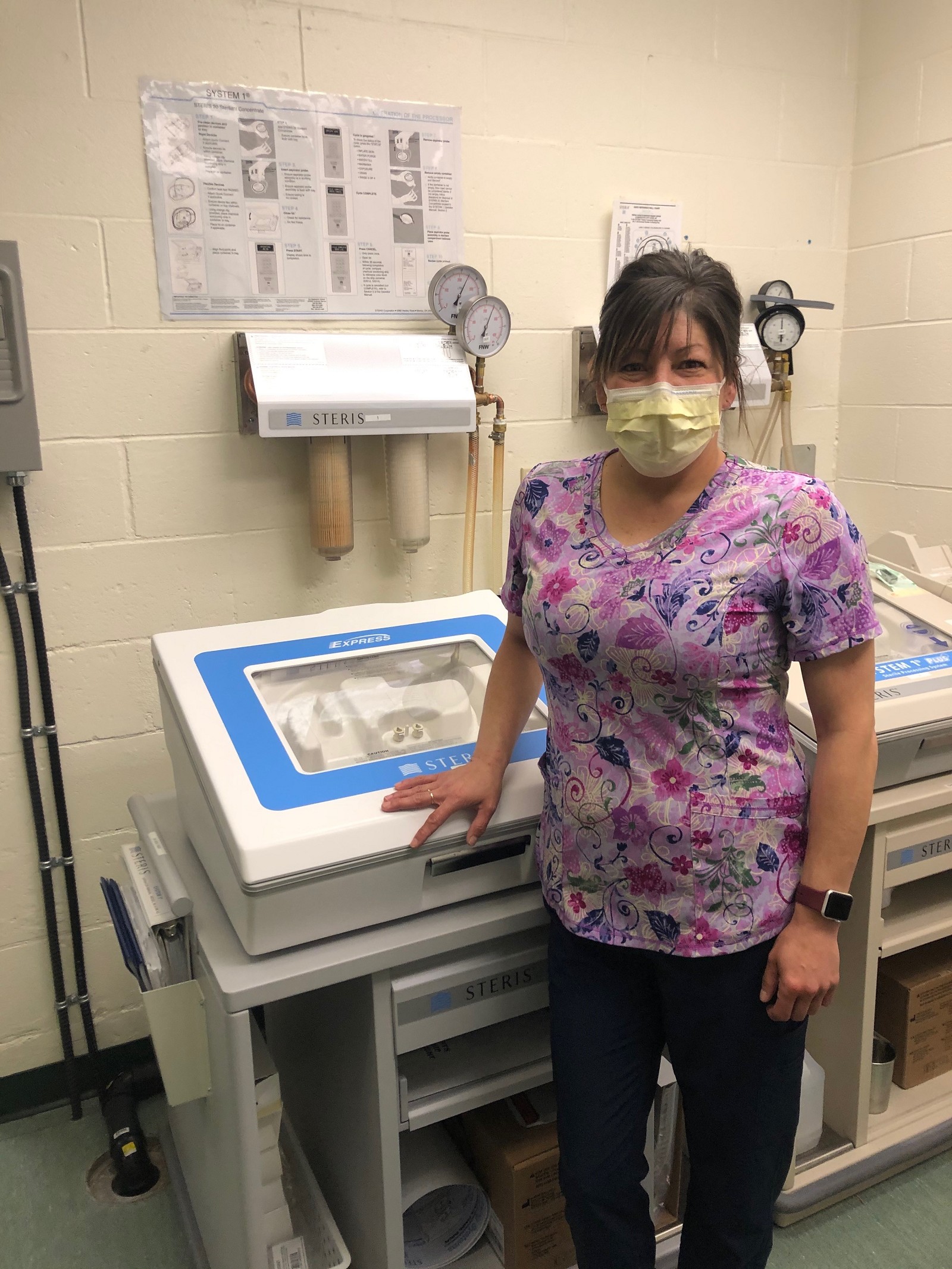
Vein Viewing System
Lake of the Woods District Hospital ($7,500)
Equipment for improving cancer patient satisfaction and safety
No one likes being poked and prodded, especially when under the stress of being diagnosed with cancer. At the Lake of the Woods District Hospital, chemotherapy is offered to patients to save them the almost 1,000 km round trip to Thunder Bay. Patients who require chemotherapy often need multiple pre- and post-treatment bloodwork samples. A vein viewer allows nurses to see, in real time, inside a patient's body to accurately find a vein to obtain these samples. Less pokes means increased patient safety and a decreased chance for infection; critical when having chemotherapy.
Vital Signs Monitor and Digital Scale
Red Lake Margaret Cochenour Memorial Hospital ($3,784)
Equipment for assessing patients to safely receive chemotherapy
When patients are receiving chemotherapy, it's incredibly important that the medication is given safely and that patients are monitored throughout their treatment. Before any medication is given, nurses will take an accurate measurement of a patient's weight so that the correct dose can be calculated; a digital scale is the best tool for this job. Once a patient is comfortably settled to receive their treatment, nurses monitor how well they're tolerating treatment by using a vital signs monitor to keep a close on how a patient is doing. If anything's not quite right, they can tell right away and take action.
Heated Chemotherapy Recliner
Sioux Lookout Meno Ya Win Health Centre ($5,642)
Equipment for keeping patients comfortable while receiving chemotherapy
Comfortable seating plays a significant role in ensuring a positive patient experience. The new heated chemotherapy recliner will help patients relax in their surroundings. Many patients with cancer experience fatigue and these chairs promote rest and relaxation, which is always a positive. The heated recliners also help as patients receiving treatment may feel cold because the fluids used for the treatment are at room temperate. Having heat at one's back can provide additional comfort, especially for patients who are there for several hours.
Heated Chemotherapy Chair with Lift Capability
Santé Manitouwadge Health ($3,508)
Equipment for keeping patients comfortable while receiving chemotherapy
Comfortable seating plays a significant role in ensuring a positive patient experience. The new heated chemotherapy chair will help patients relax in their surroundings. Many patients with cancer experience fatigue and these chairs promote rest, which is always a positive. The heated chairs also help as patients receiving treatment may feel cold because the fluids used for the treatment are at room temperate. Having heat at one's back can provide additional comfort, especially for patients who are there for several hours. This chair also assists patients get up and stand with less exertion, which is helpful if they're experiencing pain.
Digital Stand-On Scale with Height Gauge
Hôpital Notre Dame Hospital Hearst ($4,928)
Equipment for assessing patients to safely receive chemotherapy
When patients are receiving chemotherapy, it's incredibly important that the medication is given safely. Before any medication is given, nurses take an accurate measurement of a patient's weight and height so that the correct dose can be calculated; a digital scale with a height gaugge is the best tool for this job. The new scale gives patients confidence as they can walk on and hold on safely; helpful when they're feeling weak or are frail.
